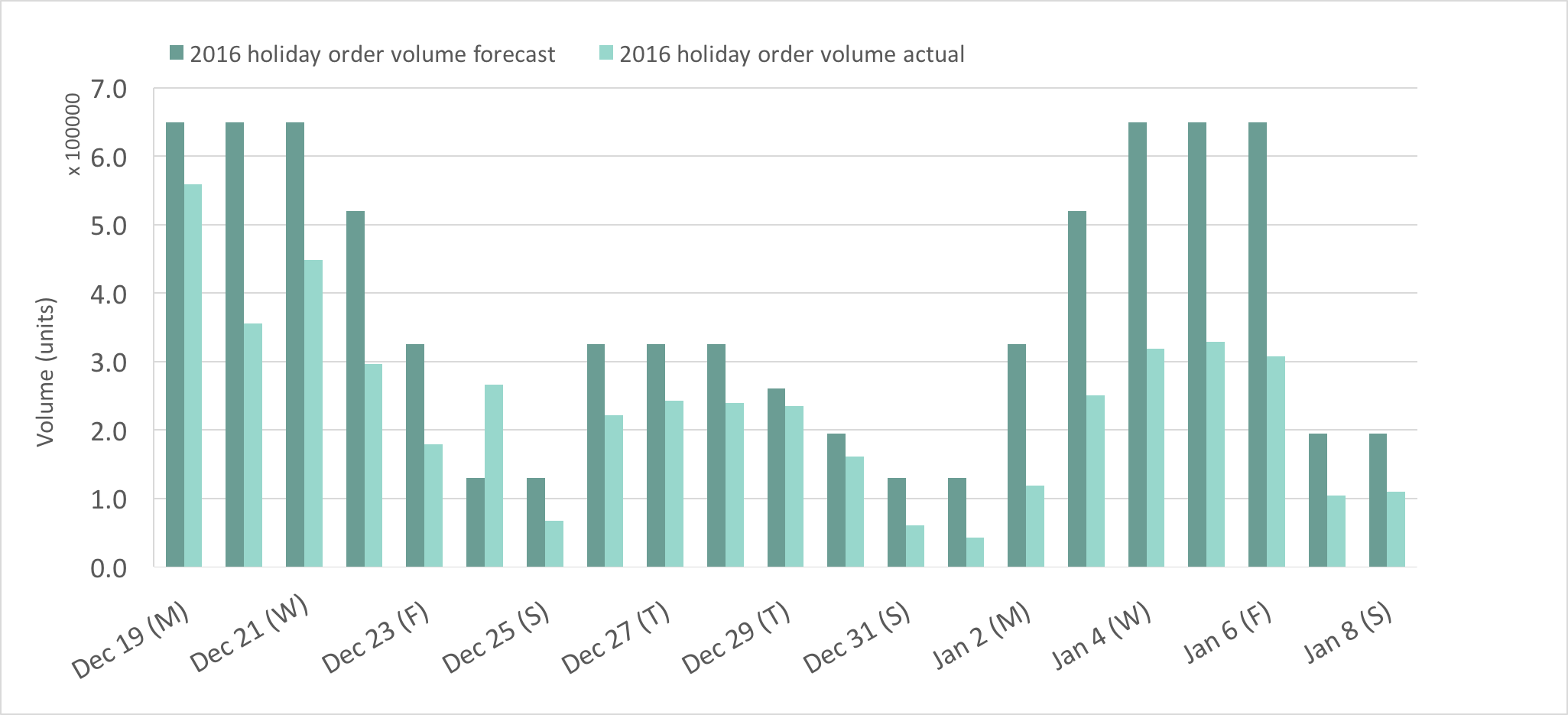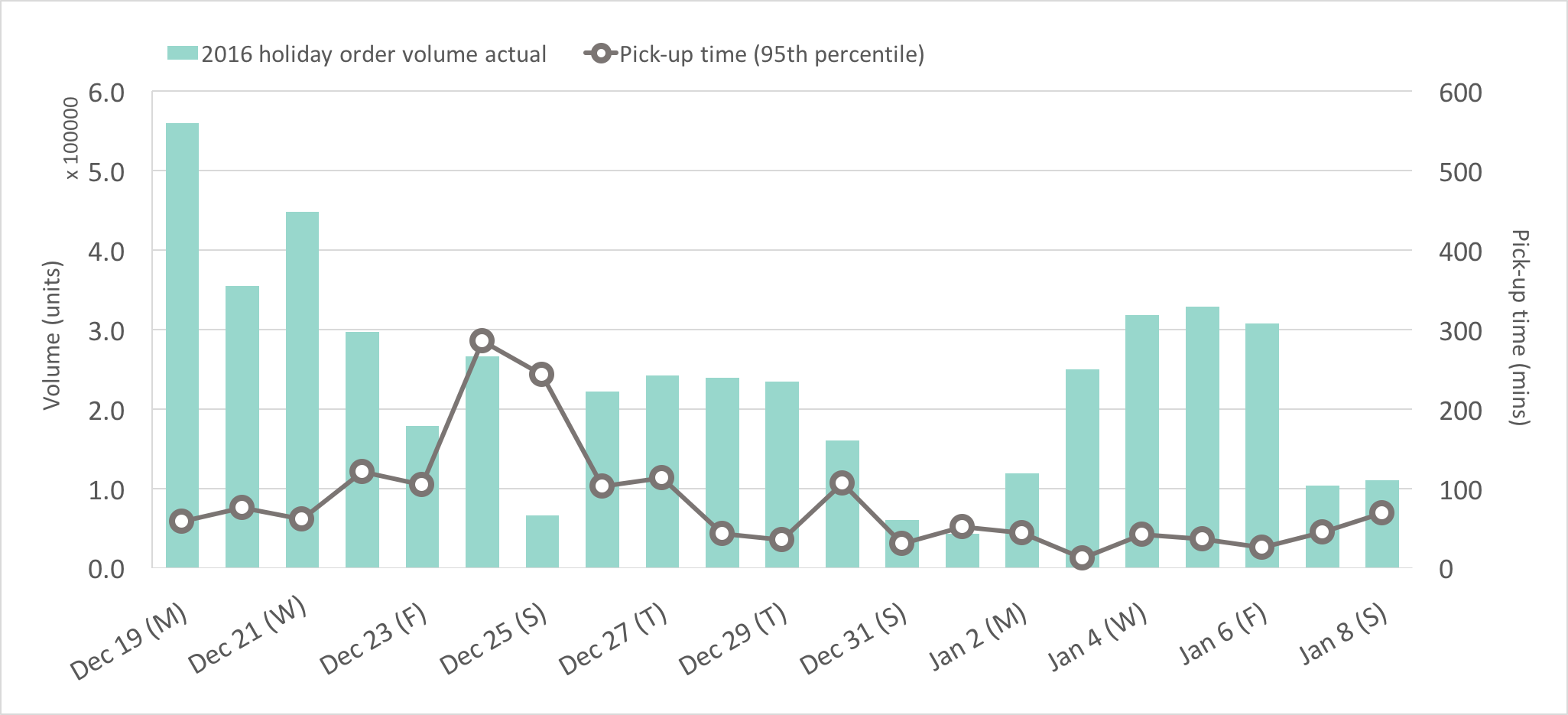Forecasting translation demand and supply for the holiday season

The translation industry has been notoriously slow to adopt a data-driven operations model. As other industries have done so and seen efficiency skyrocket, the translation space has been hindered by a continued reliance on old-school project management. At Gengo, we believe change is overdue.
In 2016, our community of over 21,000 translators translated 218 million units (words or characters) on our platform, an equivalent of more than 597,000 units per day. 95% of customer orders are currently started within 2 hours of order placement and 99% within 5 hours. Our secret is putting translation data at the very heart of Gengo’s operations. Translator behavior data and customer ordering patterns are analyzed to spot gaps where translator coverage is weak and can be improved. Doing so allows us to match the spikes and troughs of our customers’ demand with flexible and agile translation supply, resulting in fast turnaround times and large output.
A case in point: The 2016 holidays
Every year, the last two weeks of December see activity among the translator community drop as many take time off. The impact to Gengo varies from language to language as different countries celebrate the holidays to varying degrees. Christmas is a major holiday in the US while it’s barely celebrated in Japan. Not a week later, it’s Japan who’s in full holiday mode for New Year’s day and most people take several days off after Jan 1. To complicate things, the nature of translation is such that customers and translators are often located in different countries and therefore on conflicting schedules. This presents a unique supply challenge that can be solved by taking a data-driven approach.
We see from historical data for 2015 and previous years that holiday customer ordering patterns are generally predictable on a macro level. Order volume tends to decrease towards the Christmas holiday and increases back up in the work days following the holiday to approximately 50% of normal volume. Orders then decrease back down towards New Year’s day before finally ramping back up quickly to normal levels from the first workday of the Japanese calendar (most customers included in this analysis are located in Japan). We also see greater volatility in translator availability around Christmas time, resulting in more customers wanting translation than translators willing to provide it. This means customers receive their translations slower than normal.
Forecasting order volume
To prepare for the upcoming 2016 holiday season, we applied these learnings by predicting order volume per day, as shown in Chart 1 below. We took a conservative approach, forecasting volume on the higher side for redundancy. Note that forecasts or actuals mentioned here did not include a number of customers as their projects were handled separately.
Chart 1: 2016 holiday volume forecast

Comparing order volume forecast to actual
Actual 2016 holiday order volume followed our forecasts fairly closely, as shown in Chart 2 below. Due to our conservative approach, the forecasted volumes were mostly higher than actual volumes (the only under-forecasted day, Dec 24, was due to one, large unexpected order). This over-forecasting was particularly evident after Jan 1, where actual volume was lower than expected. Still, predictions up until Jan 1 achieved an accuracy of 71%.
The forecasts identified potential translator availability shortages between Dec 23 and Dec 30. To prepare, we put in place special teams of translators on standby during those dates. We also actively monitored customer orders, bonusing them with extra rewards when needed. This gave us greater control of our translation supply and allowed us to match customer demand flexibly and reliably.
Chart 2: 2016 holiday order volume forecast vs actual

Customer experience and overall performance
Customers experienced quicker service in 2016 than holiday seasons in the past. Chart 3 shows actual volume ordered and pick-up time per day, which measures the time it takes for translations to be claimed and translated by the community. Lower pick-up times mean that translations were started quickly, and we consider anything less than 120 minutes as fast and less than 300 minutes as acceptable. Pick-up times around Christmas were highest during the 2016 holiday period (286 mins) but were much lower than the year prior. Overall, the 95th percentile pick-up time during the 2016 holidays was 59 minutes, a 57% improvement over 2015.
Chart 3: 2016 holiday order volume actual and pick-up times

Ultimately, we were able to provide our customers with consistent and reliable service amidst a turbulent holiday season, and we couldn’t have done so without our data-driven approach. As Gengo takes on more customers and more translators around the world, the need for accurate data forecasting will become even greater, and we’re ready to face the challenge. We hope to see more of the industry take a similar stance and together we will redefine the market.


